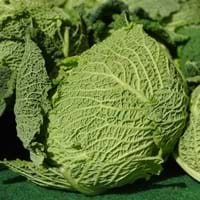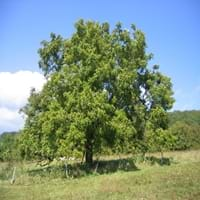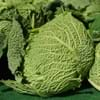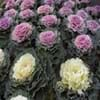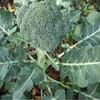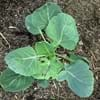Life Span
Biennial
Perennial
Origin
Southern Europe, Western Europe, Mediterranean
Europe, Eastern Europe, Southern Europe, Russia/Siberia, Iran, Central Asia, Southern Asia, Western Asia, India, Nepal, China
Types
Not Available
Black walnut
Number of Varieties
Not Available
Habitat
Cultivated Beds, Moist Soils
Cold Regions, Hills, Hillside
USDA Hardiness Zone
6-8
4-8
Sunset Zone
A1, A2, A3, H1, H2, 1a, 1b, 2a, 2b, 3a, 3b, 4, 5, 6, 7, 8, 9, 10, 11, 12, 13, 14, 15, 16, 17, 18, 19, 20, 21, 22, 23, 24
1a, 1b, 2a, 2b, 3a, 3b, 4, 5, 6, 7, 8, 9, 14, 15, 16, 17, 18, 19, 20, 21
Habit
Rosette/Stemless
Oval or Rounded
Flower Color
Light Purple, Yellow
Yellow green
Flower Color Modifier
Bicolor
Bicolor
Fruit Color
Not Available
Green, Brown
Leaf Color in Spring
Green, Dark Green
Green, Copper
Leaf Color in Summer
Light Green, Blue Green
Dark Green
Leaf Color in Fall
Light Green, Blue Green
Dark Green, Yellow green
Leaf Color in Winter
Light Green, Blue Green
Not Available
Leaf Shape
Ovate elongated
Pinnate
Plant Season
Spring, Summer, Fall
Spring, Summer, Fall
Sunlight
Full Sun, Partial Sun
Full Sun
Type of Soil
Loam, Sand
Clay, Loam, Sand
The pH of Soil
Acidic
Acidic, Neutral
Soil Drainage
Well drained
Well drained
Bloom Time
Spring, Late Spring, Early Summer
Late Spring, Early Summer
Tolerances
Drought
Drought, Frost
Where to Plant?
Container, Ground
Ground
How to Plant?
Cuttings, Seedlings
Budding, Seedlings
Plant Maintenance
Medium
Medium
Watering Requirements
Requires regular watering
Requires watering in the growing season, Water Deeply, Water when top layer of soil becomes dry
In Summer
Lots of watering
Lots of watering
In Spring
Moderate
Moderate
In Winter
Average Water
Average Water
Soil pH
Acidic
Acidic, Neutral
Soil Type
Loam, Sand
Clay, Loam, Sand
Soil Drainage Capacity
Well drained
Well drained
Sun Exposure
Full Sun, Partial Sun
Full Sun
Pruning
Remove damaged leaves, Remove dead branches, Remove dead leaves
In Early Autumn, Prune to stimulate growth, Remove dead leaves
Fertilizers
All-Purpose Liquid Fertilizer
fertilize in spring, Nitrogen
Pests and Diseases
Bacterial leaf spot, Bacterial soft rot, Beet armyworm, Cabbage looper, Cabbageworm, Flea Beetles, Fungal leaf spots
Anthracnose, Armillaria mellea, Blight, Caterpillars, Crown gall, Crown rot, fungus, Powdery mildew, Red blotch
Plant Tolerance
Drought
Drought, Frost
Flowers
Showy
Insignificant
Flower Petal Number
Single
Not Available
Foliage Texture
Bold
Coarse
Foliage Sheen
Matte
Glossy
Attracts
Bugs, Rabbits
Not Available
Allergy
Nausea
Severe allergen
Aesthetic Uses
Not Available
Not Used For Aesthetic Purpose
Beauty Benefits
Not Available
Good for skin and hair
Environmental Uses
Air purification
Absorbs greenhouse gases, Absorbs huge amounts of CO2, Air purification, Amazing growth rate, Erosion control, Food for birds, Food for insects, Forms dense stands, Nesting sites for birds, Prevent Soil Erosion, Shadow Tree, Shelter for wildlife, Windbreak
Medicinal Uses
Nutrients
Anemia, Asthma, Cancer, Cough, Diarrhea, Menstrual Disorders, Urinary tract problems
Part of Plant Used
Whole plant
Fruits, Seeds
Other Uses
Used in chopped mixed salad, Used in curries, soups, stews
Economic Purpose, Used as a dye, Used as firewood, Used As Food, Used for its medicinal properties
Used As Indoor Plant
No
No
Used As Outdoor Plant
Yes
Yes
Garden Design
Bedding Plant, Container, Edible, Herb / Vegetable
Edible, Feature Plant, Shade Trees
Botanical Name
Brassica oleracea
JUGLANS regia
Common Name
Alcosa Cabbaga, Savoy Cabbage
English Walnut
In Hindi
Savoy Cabbage
अंग्रेजी अखरोट
In German
Wirsing
Englisch Walnut
In French
Savoy Cabbage
Anglais Noyer
In Spanish
col de col rizada
Inglés nuez
In Greek
Savoy Cabbage
Αγγλικά Καρυδιά
In Portuguese
Savoy Cabbage
Inglês Walnut
In Polish
Kapusta włoska
orzech włoski
In Latin
Brassica Sabaudiae
Nucis anglicus
Phylum
Embryophyta
Tracheophyta
Class
Eudicotyledones
Magnoliopsida
Order
Brassicales
Fagales
Family
Brassicaceae
Juglandaceae
Clade
Angiosperms, Eudicots, Rosids
Angiosperms, Eudicots, Rosids
Tribe
Not Available
Juglandeae
Subfamily
Not Available
Juglandoideae
Number of Species
Not Available
Not Available
Season and Care of Savoy Cabbage and English Walnut
Season and care of Savoy Cabbage and English Walnut is important to know. While considering everything about Savoy Cabbage and English Walnut Care, growing season is an essential factor. Savoy Cabbage season is Spring, Summer and Fall and English Walnut season is Spring, Summer and Fall. The type of soil for Savoy Cabbage is Loam, Sand and for English Walnut is Clay, Loam, Sand while the PH of soil for Savoy Cabbage is Acidic and for English Walnut is Acidic, Neutral.
Savoy Cabbage and English Walnut Physical Information
Savoy Cabbage and English Walnut physical information is very important for comparison. Savoy Cabbage height is 25.40 cm and width 30.50 cm whereas English Walnut height is 1,220.00 cm and width 1,220.00 cm. The color specification of Savoy Cabbage and English Walnut are as follows:
Savoy Cabbage flower color: Light Purple and Yellow
Savoy Cabbage leaf color: Green, Dark Green
English Walnut flower color: Yellow green
- English Walnut leaf color: Green and Copper
Care of Savoy Cabbage and English Walnut
Care of Savoy Cabbage and English Walnut include pruning, fertilizers, watering etc. Savoy Cabbage pruning is done Remove damaged leaves, Remove dead branches and Remove dead leaves and English Walnut pruning is done In Early Autumn, Prune to stimulate growth and Remove dead leaves. In summer Savoy Cabbage needs Lots of watering and in winter, it needs Average Water. Whereas, in summer English Walnut needs Lots of watering and in winter, it needs Average Water.
